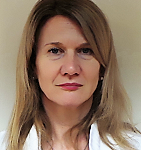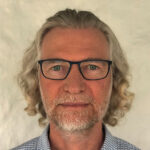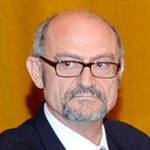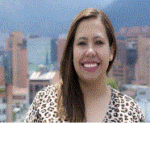WG1 - Network Promotion
Networking, management, dissemination issues, assessment of work plan and sustainability
Objectives
RC3. Raising general awareness of the impact of adverse events on healthcare professionals (considering gender differences) and their consequences in personal, professional, social, legal, economic, and labour terms.
RC5. Understanding of the causes of clinical errors disseminating the results of the research and experiences to stakeholders (patient associations, professional societies, trade unions, healthcare manager associations, policy makers) and the general public.
CB3. To provide a platform to develop a research and implementation agenda involving relevant stakeholders in the healthcare context to promote effective solutions and facilitate discussion of the legal, ethical, social, and organisational issues.
Deliverables
– Website
– Corporative Image
– Annual and Final Reports
– Final Technical Report
Members





Ceyda Uzun Şahin
Department of Vocational School of Health Services, Recep Tayyip Erdoğan University, Rize
Turkey






José Joaquín Mira
Fundacion para el fomento de la investigación sanitaria y biomédica de la comunitat valenciana
SPAIN


Marius-Ionut Ungureanu
Department of Public Health, Babeș-Bolyai University
ROMANIA




Sofia Guerra Paiva
National School of Public Health , University of Lisbon
PORTUGAL

Susanna Tella
LAB University of Applied Sciences, Multidisciplinary BIOPROT research team aiming to develop sustainable personal protective equipment (PPE) ecosystem, Sharing Learning from Practice to Improve Patient Safety (SLIPPS, www.slipps.eu) research team
FINLAND




WG2 - Review and description of the State-of-the-Art
Objectives
RC1. Encouraging discussion of the meaning of the fourth criterion (Quadruple Aim) and its implications for healthcare organisations.
RC2. Further developing the theoretical conceptualisation of the second victim phenomenon and developing a common understanding of its definition.
RC9. Learning to tackle with the consequences of the SV phenomenon by promoting a debate in healthcare to learn from other industries.
CB2. To bridge management, social, legal, educational, and clinical expertise to further develop the theoretical conceptualisation of the second victim phenomenon.
Deliverables
Paper. Systematic review of interventions conducted in other industries.
Paper. Review of proven interventions aimed at supporting second victims
Members




Daniela Campos de Andrade Lourenção
University of São Paulo - Researcher at the Research Group on Quality and Evaluation of Health Services of the Graduate Program in Nursing Management
Brazil




Georgeta Popovici
National School of Public Health, Management and Professional Development Bucharest
Romania












Massimiliano Panella
Università degli Studi del Piemonte Orientale UPO - Dipartimento di Medicina Traslazionale
ITALY

Mirabela Istrate
Babeș-Bolyai University, Faculty of Political, Administrative and Communication Sciences - Department of Public Health
Romania


Nebojša Stilinović
Faculty of Medicine Novi Sad - Faculty of Medicine, Department of Pharmacology, Toxicology and Clinical Pharmacology
Serbia








Reinhard Strametz
Wiesbaden Business School, RheinMain University of Applied Science and German Coalition for Patient Safety
GERMANY


Sandra Buttigieg
University of Malta,Department of Health Services Management,Faculty of Health Sciences, Mater Dei Hospital
MALTA


Silvia Gabriela Scintee
Scoala Nationala de Sanatate Publica Management si Perfectionare in Domeniul Sanitar
Romania



Veronica Lindström
Karolinska Insititutet, Department of Neurobiology, Care Sciences and Society, section of nursing.
Suecia
WG3 - Making it Happen
Objectives
RC6. Introducing new metrics on the system level that should be used to improve health workforce policy.
RC8. Agreeing what to do after occurring adverse events, sharing knowledge about research evidence and methods to tackle with this phenomenon, progressing beyond the state of the art and promoting innovation.
CB4. To create a network for the integration of fragmented initiatives, identifying more effective measures, applying lessons learned and to foster knowledge exchange and dissemination of research results.
CB5. To encourage the development of proposals to support second victims by overcoming the current fragmentation of rules, approaches, and policies, including experiences from other industries.
Deliverables
- Case Study.
- Training Manual.
- Paper. Observational study on approaches to address the second victim phenomenon in Europe.
- Technical Report on analysis of interventions implemented in participating countries to address the second victim’s phenomenon.
Members








Basia Kutryba
Towarzystwo Promocji Jakosci Opieki Zdrowotnej w Polsce (Polish Society for Quality in Healthcare Promotion in Poland) TPJ
Poland




David Schwappach
Swiss Patient Safety Foundation and Institute of Social and Preventive Medicine, University Bern
Switzerland



Gunnar Tschudi Bondevik
Department of global public health and primary care, University of Bergen
Norway




















Pinar Ayvat
Izmir Democracy University Medical Faculty Anesthesia and Reanimation Department
Turkey






Sofia Guerra Paiva
National School of Public Health , University of Lisbon
PORTUGAL


Susana Lorenzo
Hospital Universitario Fundacion Alcorcon ,Quality and Patient Management
Spain

Susanna Tella
LAB University of Applied Sciences, Multidisciplinary BIOPROT research team aiming to develop sustainable personal protective equipment (PPE) ecosystem, Sharing Learning from Practice to Improve Patient Safety (SLIPPS, www.slipps.eu) research team
FINLAND




WG4 - Facilitators and barriers
Explore and facilitate alternatives to overcome taboos, or obstacles facilitating collaboration among stakeholders
Objectives
RC4. Achieving changes in rules and regulations facilitating discussion of the legal, ethical, and organisational gaps while promoting a common understanding of factors underlying the interventions designed to support second victims.
RC7. Encouraging inclusion of the consequences of mistakes on care providers and the implications for health sciences in the field studies curricula.
CB1. To lead a debate to promote a culture of transparency and legal certainty as a contribution to furthering the wellbeing of frontline medical staff as part of its commitment to quality assurance.
Deliverables
- White paper. Analysis of gaps training healthcare workforce.
- Paper. Observational study based on qualitative techniques on the main gaps in the health professions’ curriculum to incorporate patient safety into training requirements across Europe.
Members









Ceyda Uzun Şahin
Department of Vocational School of Health Services, Recep Tayyip Erdoğan University, Rize
Turkey





Hrefna Gunnarsdóttir
Center for Advanced Studies in Biomedical Innovation Law (CeBIL), Faculty of Law, University of Copenhagen
Iceland









Matthias Raspe
Charité - University Medicine Berlin,Dpt. for Infectious Diseases and Pneumology
Germany






Peter Bandura
Faculty of Medecine of Commenius University - Faculty of Medecine of Cumenius University [Institute of Social Medecine and Medical Ethics]
Slovakia



Sandra Buttigieg
University of Malta,Department of Health Services Management,Faculty of Health Sciences, Mater Dei Hospital
MALTA

Sofia Guerra Paiva
National School of Public Health , University of Lisbon
PORTUGAL




